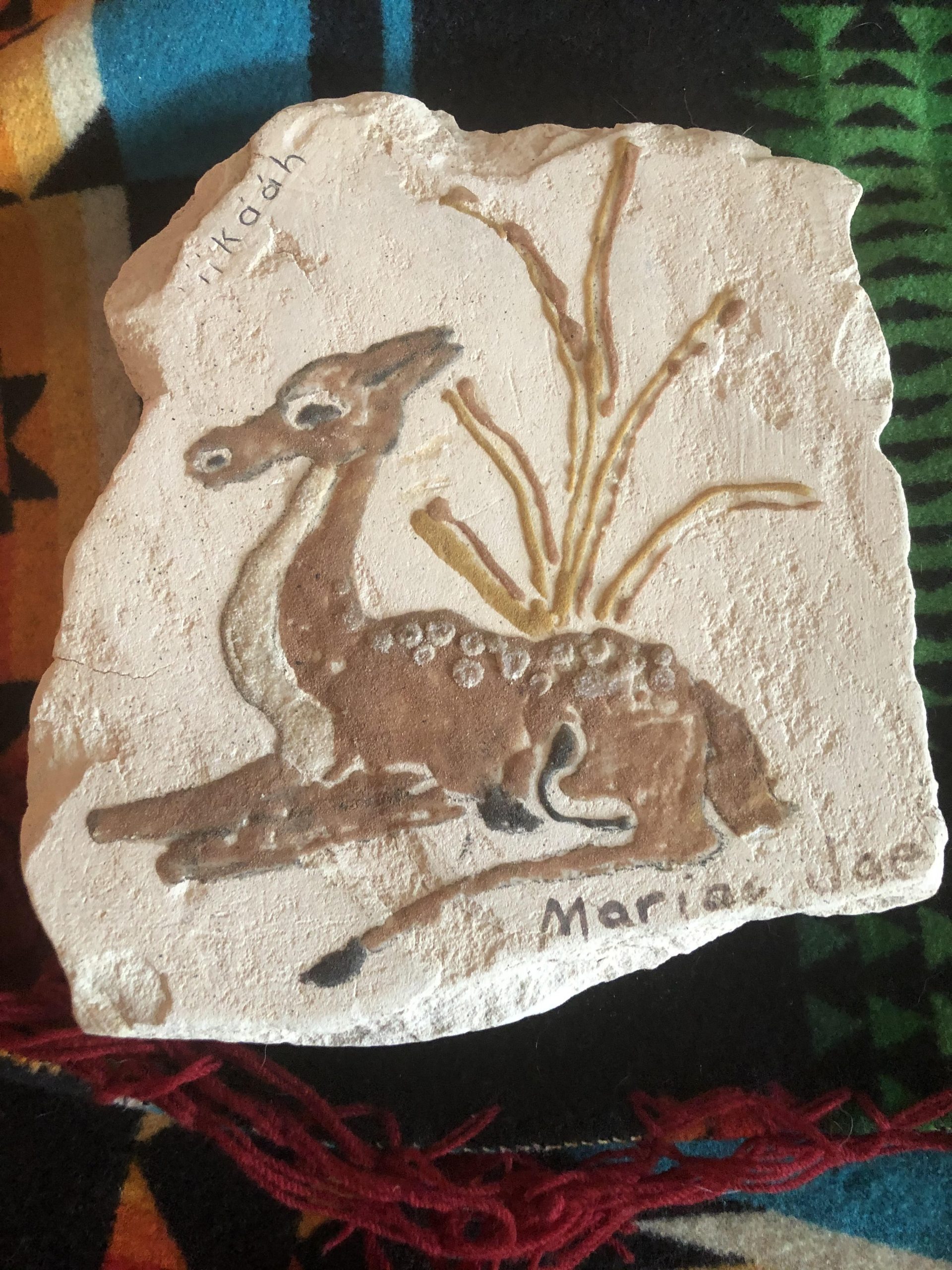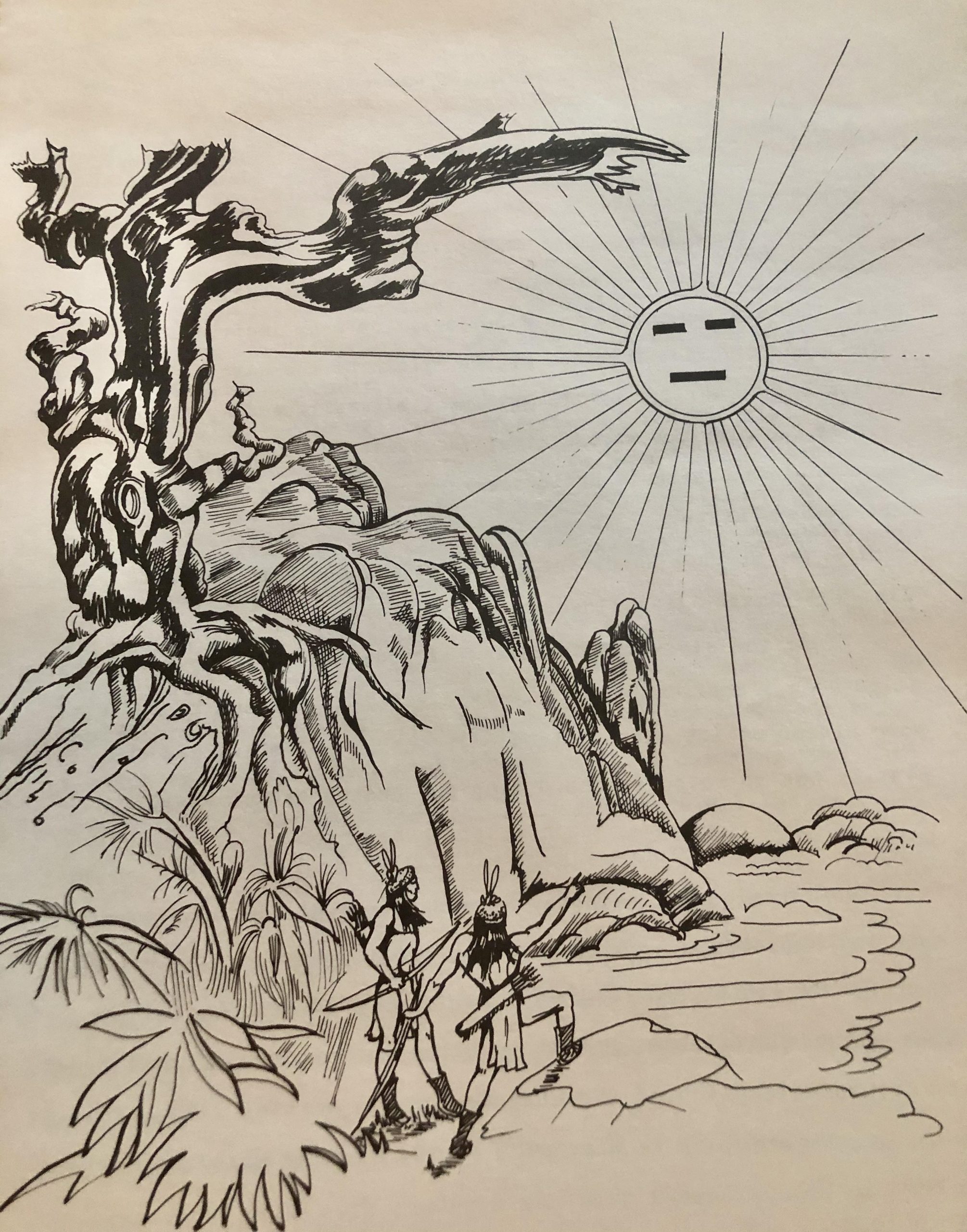
The order for closing the doors hadn’t come yet, but we were already sheltering in place as the cold winds of March blew in. Bill had too many near misses over the winter, so I gather up necessities for an unknown stay-in. For me, that includes a masked visit to the nearest second-hand book store. They had an eclectic collection, with an entire shelf occupied by Tony Hillerman, a mystery writer honored by those to whom he dedicated his books: the Navajo and Hopi nations.
I want an escape hatch from the pandemic present. I miss classes, hallway conversations that are often converting. I need to travel backwards in time to the place I first “earned” my living, working on excavations on Black Mesa as a college student, and then at Rough Rock Demonstration School as a language arts consultant at the foot of the Mesa. In the confines of a Delaware living room, I long for “the immense sky, the line of thunderheads building over the Coconino Rim, the sunlight reflecting off the Vermillion Cliffs below the Utah border, and the towering cauliflower shape of the storm already delivering a rain blessing upon the San Francisco Peaks, the Sacred Mountains marking the western margin of his people’s holy land.” The First Eagle, p. 137.
I open the book and fall into a trap; the hero, Jim Chee, a Navajo Tribal Police Officer, is tracking a murderer and a virulent threat of bubonic plague. Contamination. The twist in the wind news from the Center of Infectious Disease Control and the unraveling plotlines of a novel add to the sense of suspense and the mystery of social dis-ease. There’s no escaping this pestilence.
I leave Chee in the eagle blind and locate Rough Rock School on a Google map. The notation states that the school is closed. I turn next to a text that first carried my name into print. It’s filled with names of those who initiated me into education at the foot of Black Mesa. It’s a collection of methods, stories and dramatic structures for Navajo children’s bi-lingual education. It’s written in Navajo and English, sparked with images that are more durable than the words they “illustrate”.

I study the names of these teachers of Dine’, the people; I remember the faces of the children: Maria Joe who drew a deer in sand linked to its name; Anderson Benally whose wit was as pointed as his pen; the mythic story of the Twins on their journey to their father, the Sun; the grace of a shepherd girl holding a lamb. I hear these voices, these visions, call for medical help, for the recognition of treaties, for the medicine of economic kindness, and the shouts for justice from the Four Corners and beyond. Those who hear will be counted as part of the human family if and only if they join in the struggle. See the article here.
Smallpox was the first genocidal virus carried here by bellegonnas; covid-19 may be as devastating to First Nations as the bubonic plague was to Europe. In their own defense, Navajo police are blocking roads, setting up checkpoints, tracking down the life-killing enemy, with the dedication of a Jim Chee, the wisdom of Joe Leaphorn.
I find myself spreading my aging Pendleton blanket across my knees and praying for a visitation of Changing Woman, whole and holy, lover of the two-legged ones. Restore the harmony of lives open to Mystery. Draw out the unhuman forces of evil, the greed that contaminates community. Help us stand guard at the crossroads for the sake of all creatures and creation. As it was in the beginning, is now and ever shall be: may what begins in beauty end in beauty.
